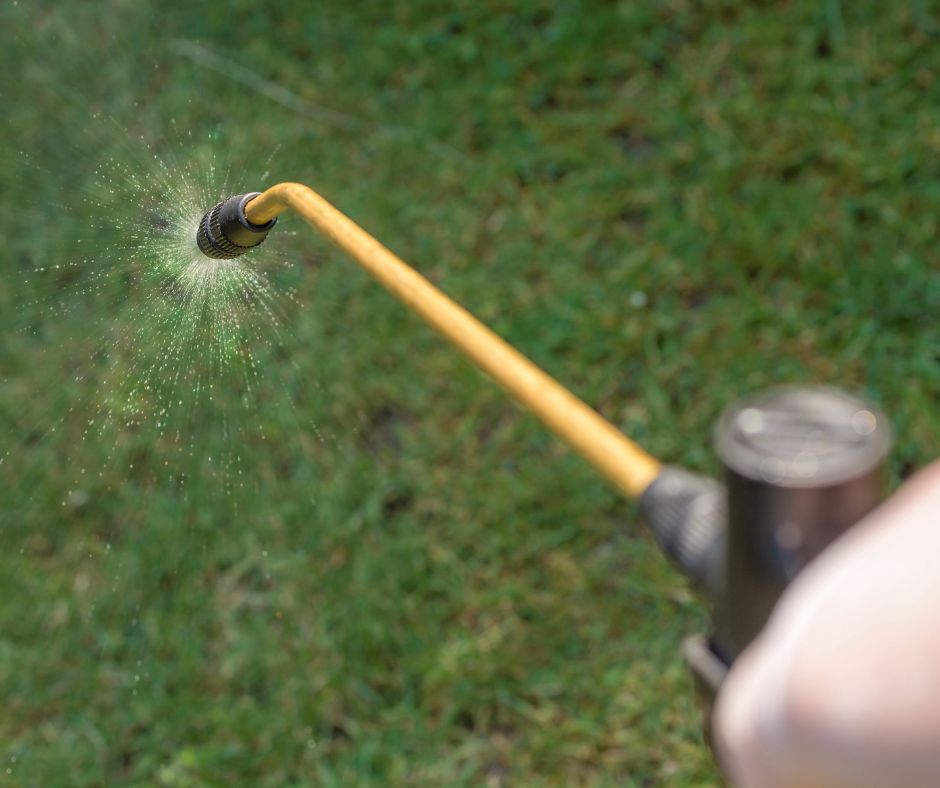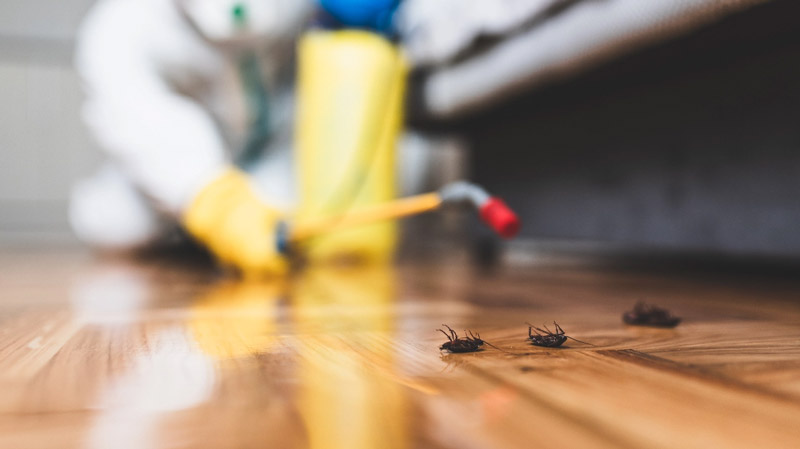Reliable Cockroach Exterminator Port Charlotte to Remove Pests Quickly
Find Out About the Most Current Developments in Bug Control and Exactly How to Carry Out Reliable Treatment Solutions
In recent years, the field of parasite control has observed considerable advancements, driven by the demand for efficient and sustainable treatment options. Innovative strategies such as Integrated Parasite Administration (IPM) combine environmentally friendly methods with cutting-edge innovation, enhancing both efficiency and ecological obligation.
Eco-Friendly Insect Control Options
Recently, the need for eco-friendly bug control options has risen as services and homeowners alike seek sustainable choices to conventional chemical therapies. This change is driven by expanding ecological understanding and a need to minimize the wellness dangers related to artificial pesticides.

Environmentally friendly pest control approaches include a variety of strategies that prioritize using all-natural materials and techniques. Integrated Insect Monitoring (IPM) is one such approach, integrating organic, social, and mechanical strategies to handle pest populaces while decreasing dependence on chemicals (Wildlife removal services). This all natural method emphasizes avoidance through environment adjustment and the intro of natural predators, therefore fostering a well balanced community
One more popular choice is using organic pesticides stemmed from plants, which have a tendency to be much less harmful to non-target organisms. Products like neem oil and diatomaceous earth have gained traction for their performance in controlling bugs while posing minimal risks to human wellness and the atmosphere.
Furthermore, exclusion strategies, such as sealing entrance factors and keeping sanitation, play a crucial role in green parasite management. By taking on these lasting methods, organizations and individuals can properly take care of insects while advertising a healthier planet for future generations.
Smart Innovation in Pest Monitoring
Technology is reshaping the landscape of parasite monitoring, with clever modern technology arising as an essential force in enhancing effectiveness and efficiency - Wildlife removal services. The combination of Internet of Points (IoT) gadgets, fabricated knowledge (AI), and information analytics is reinventing how pest control specialists approach invasions
Smart catches equipped with sensors can detect bug activity in real-time, sending prompt signals to operators. This allows for timely reactions, minimizing damage and lowering the requirement for comprehensive therapies. Additionally, AI formulas assess historical information to anticipate bug actions, allowing aggressive interventions based on ecological conditions and invasion patterns.
Drones and automated lorries are likewise playing a significant function in pest monitoring, giving airborne assessments of big areas, identifying hotspots, and also distributing targeted therapies. These technologies not just enhance operations but likewise improve safety and security by restricting human exposure to potentially damaging chemicals.
In addition, mobile applications empower customers to keep an eye on bug task and accessibility specialist recommendations, promoting a collaborative method to pest management. Overall, the fostering of clever modern technology is setting a new criterion in insect control, emphasizing data-driven decisions and sustainable techniques that ultimately profit both property owners and experts alike.
Integrated Insect Monitoring Approaches
Integrated Parasite Management (IPM) utilizes a holistic approach to pest control, combining different strategies to efficiently manage pest populaces while minimizing threats to human health and the environment. IPM focuses on understanding the pest life process, their natural opponents, and the community in which they thrive.
One of the essential elements of IPM is checking pest populaces with routine examinations and information collection. This enables the recognition of bug limits, identifying when intervention is necessary. Cultural practices, such as crop habitat, rotation, and cleanliness control, are check this necessary in decreasing insect occurrence and promoting plant health.
Mechanical controls, including obstacles and traps, are also vital in IPM. These methods can literally eliminate or deter insects without using chemicals. When needed, the wise application of chemical controls is used, focusing on targeted therapies that lessen ecological influence.
Education and learning and collaboration among stakeholders, consisting of farmers, bug control experts, and the community, are vital for the effective execution of IPM approaches. By focusing on sustainable methods, IPM not only addresses pest problems but likewise fosters a much healthier ecosystem.
Biological Control Approaches
Numerous organic control approaches are increasingly acknowledged for their effectiveness in handling bug populaces while advertising eco-friendly balance. These approaches harness natural killers, bloodsuckers, and virus to lower pest numbers without depending on artificial chemicals. The intro of ladybugs can properly regulate aphid populaces, while nematodes target soil-dwelling bug larvae.
Furthermore, making use of microbial chemicals, such as Bacillus thuringiensis (Bt), provides an eco-friendly option for taking care of caterpillar parasites. These items especially target pest varieties, reducing damage to useful bugs and pollinators. Preservation biological control stresses boosting environments for site web all-natural opponents, such as birds and helpful pests, therefore motivating their presence in agricultural systems.
Research remains to disclose ingenious methods within this field, such as the usage of pheromones to interfere with pest mating patterns or the development of biocontrol agents with genetic modification. Executing these methods can lead to lasting parasite management practices that mitigate the dependence on chemical treatments, eventually promoting healthier environments. As awareness of these methods grows, they are becoming essential parts of incorporated parasite management (IPM) techniques, offering a balance in between efficient bug control and environmental stewardship.
DIY Bug Control Solutions
As home owners look for efficient methods to deal with parasite issues, DIY parasite control remedies have actually obtained popularity for their accessibility and cost-effectiveness. These techniques encourage people to resolve infestations utilizing conveniently offered products and techniques, typically without the requirement for professional treatment.

In addition, keeping correct hygiene and regular assessments can protect against pest entrance and nesting (Wildlife removal services). Straightforward methods, such as securing fractures, removing food resources, and decluttering, can significantly lessen insect populaces. Catches, both homemade and commercially offered, can also offer reliable solutions for monitoring and controlling specific bugs like insects or rodents

Final Thought
The combination of environment-friendly pest control choices, clever technology, and ingenious management techniques presents a comprehensive technique to efficient parasite monitoring. By accepting Integrated Pest Management (IPM) and making use of organic control approaches, along with do it yourself services, lasting and accountable bug control can be achieved. These developments not just boost the performance of pest management practices however likewise contribute to a much healthier setting. Executing these strategies fosters a balanced environment while effectively resolving pest populations.
Environmentally friendly bug control approaches encompass an array of techniques that prioritize the use of natural compounds and methods. Integrated Bug Administration (IPM) is one such strategy, combining organic, cultural, and mechanical methods to manage bug populations while reducing dependence on chemicals. As recognition of these techniques expands, they are coming to be integral elements of incorporated pest administration (IPM) strategies, providing an equilibrium between reliable insect control and environmental stewardship.
The integration of eco-friendly bug control options, smart technology, and innovative monitoring methods offers a comprehensive technique to reliable insect management. By welcoming Integrated Pest Management (IPM) and making use of organic control approaches, along with Do it yourself remedies, sustainable and responsible insect control can be accomplished.